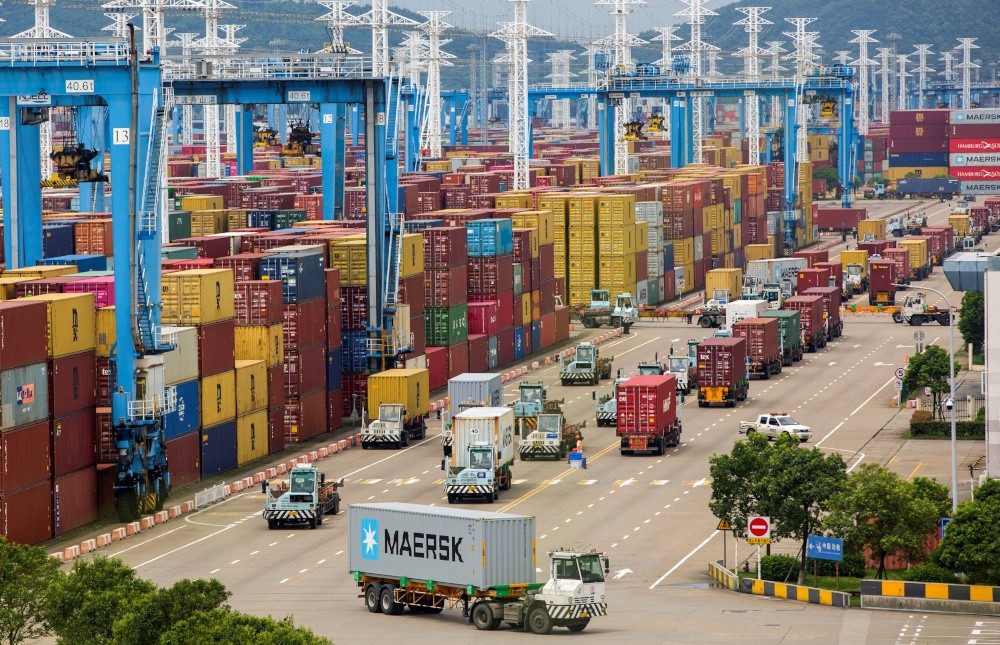The Boom in China Is Over

It is true that China faces significant obstacles, such as low population growth and high debt levels. However, it is also evident that a large portion of China’s problems are the result of a terrible cyclical slump that Beijing’s bad policy decisions have made worse. There was little indication during Premier Li Qiang’s major address to the National People’s Congress on Tuesday—his first in his new position—that the government acknowledges this or is prepared to veer off track.
Today marked the start of China’s important annual legislative session in Beijing, when the premier, as is customary, outlined the goals for the coming year as well as the year’s successes. There were no surprises within the big targets themselves: Beijing’s goals for this year are the same as last year: “around” 5% growth, 3% inflation, and 12 million new urban jobs.
The shocking and concerning thing is how much these targets appear to be deviating from reality, considering the steps that will be taken to reach them and the current state of the economy.
The extent to which China may be underachieving its potential growth—that is, the rate at which it could expand without overheating under the correct policy conditions—has been somewhat illuminated by recent studies. Considering how extravagant local governments have been over the last ten years, Beijing does confront some serious financial challenges. Furthermore, potential growth is obviously declining; this trend has been particularly noticeable since the working-age population peaked in the mid-2010s.
However, it also appears highly likely that policymakers have forgotten the lessons from previous stimulus periods and run the risk of making the same mistake that Western policymakers did after 2009: maintaining excessively restrictive fiscal and monetary policy, which would prolong a period of below-potential GDP and employment.
Considering the severity of the situation, Chinese government bond yields and short-term interbank rates have stayed unusually high during the last six months, about at the level of the previous major downturn in early 2016, when both GDP and inflation were still far higher.
That may not have much of an impact on the housing market, as borrowers are staying out of it because they don’t think real estate developers will remain solvent. However, it might be significant for other borrowing. China’s real interest rates, adjusted for inflation, have been well above the “neutral rate” since late 2021, according to economists at the French bank Natixis. They estimate that this situation may require a real rate reduction of nearly one full percentage point to correct.
Purchasing managers indexes provide high-frequency employment data, which provide additional insight into the amount of slack in the domestic economy. According to research consulting firm Gavekal, throughout the majority of 2023, China’s employment PMI subindexes—which are weighted according to their sectoral heft in the labor market—were well below their long-run average. The drag comes from services almost entirely.
Remarkably, given the current state of near-zero inflation and the restrictive nature of monetary policy, the inflation objective for 2024 is set at 3%, while the growth target remains unchanged from the previous year. It doesn’t appear like fiscal policy will become all that much more encouraging either. A budget of 3% of GDP is allocated for the official state deficit. That would equal 3.8% if the anticipated proceeds from the sale of special treasury bonds were included.
Local governments and state-run policy banks handle a large portion of China’s real fiscal spending outside the budget, but funding that may be challenging in the absence of reduced rates—especially if Beijing wishes to prevent distorting already feeble private investment. In her speech, the premier did allude to additional leeway in interest rates, stating that increases in the money supply should be in line with goals for inflation and growth. The suggestion made last year for the money supply to increase in tandem with nominal GDP has been somewhat modified. However, in his opening remarks, Li also urged exchange rate stability and emphasized the avoidance of “flood-type” stimulus last year.
Lastly, considering how much the services industry still suffers, the speech contained very little mention of it—just four mentions, one of which was in reference to a “modern” services sector that was more closely entwined with manufacturing. As the first significant objective for 2024, however, “striving to modernize the industrial system” was stressed.
Li did hint at the possibility of further government incentives to boost consumer spending, stating that customer “trade-in” programs would be supported. In past recessions, Beijing has, for instance, supported the purchase of cars.
Though there are many indications of laxity in China’s services sector, which can recover robustly with the correct stimulus, and protectionism is on the increase elsewhere, the government still appears to think that it can effectively manufacture and export its way out of problems.
Unsolvable issues include aging populations, substantial municipal debt, and a flawed property finance scheme. But China’s increasingly rigid policy machinery might be the country’s largest structural issue.










